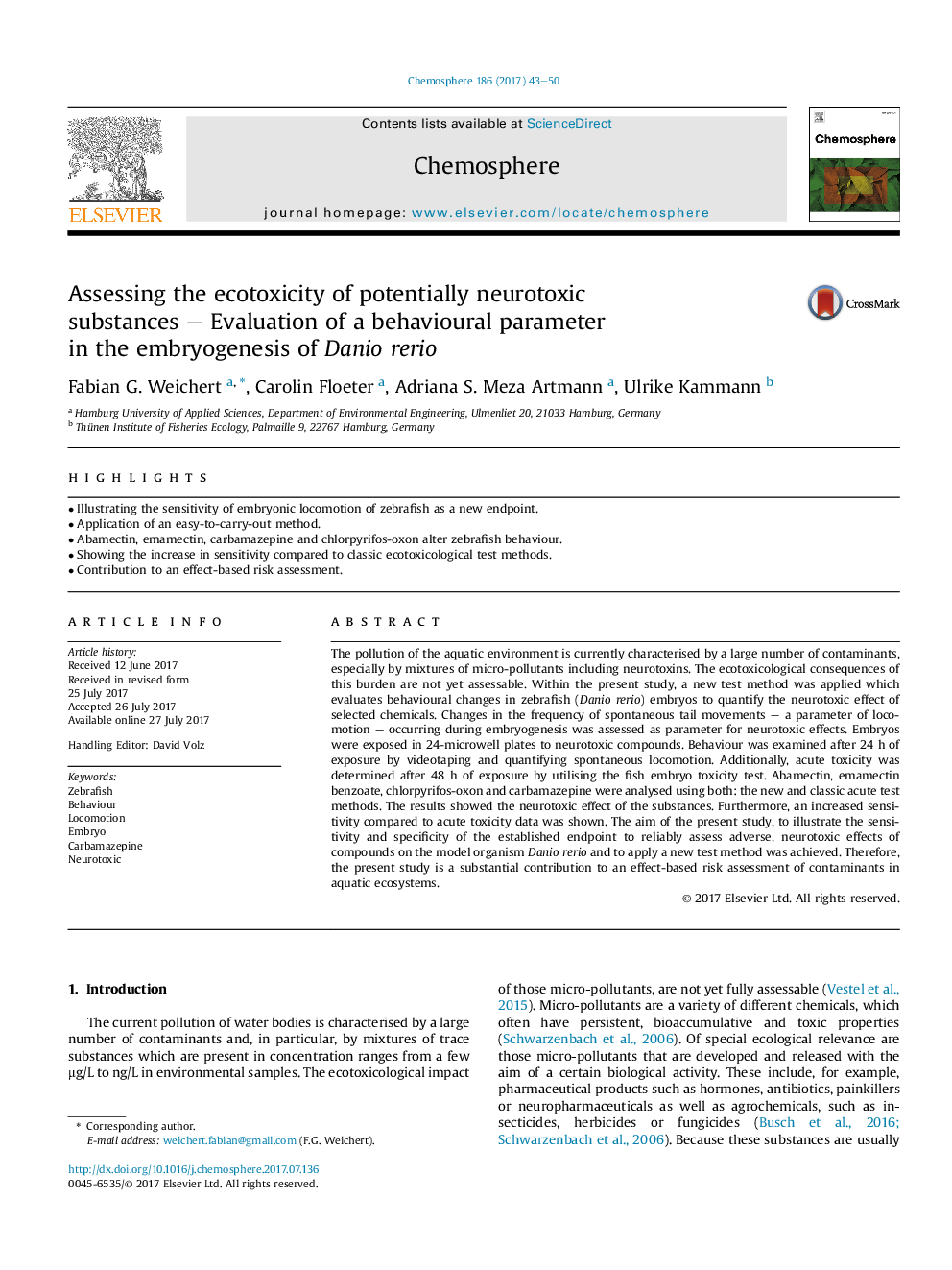| Article ID | Journal | Published Year | Pages | File Type |
|---|---|---|---|---|
| 5746047 | Chemosphere | 2017 | 8 Pages |
â¢Illustrating the sensitivity of embryonic locomotion of zebrafish as a new endpoint.â¢Application of an easy-to-carry-out method.â¢Abamectin, emamectin, carbamazepine and chlorpyrifos-oxon alter zebrafish behaviour.â¢Showing the increase in sensitivity compared to classic ecotoxicological test methods.â¢Contribution to an effect-based risk assessment.
The pollution of the aquatic environment is currently characterised by a large number of contaminants, especially by mixtures of micro-pollutants including neurotoxins. The ecotoxicological consequences of this burden are not yet assessable. Within the present study, a new test method was applied which evaluates behavioural changes in zebrafish (Danio rerio) embryos to quantify the neurotoxic effect of selected chemicals. Changes in the frequency of spontaneous tail movements - a parameter of locomotion - occurring during embryogenesis was assessed as parameter for neurotoxic effects. Embryos were exposed in 24-microwell plates to neurotoxic compounds. Behaviour was examined after 24Â h of exposure by videotaping and quantifying spontaneous locomotion. Additionally, acute toxicity was determined after 48Â h of exposure by utilising the fish embryo toxicity test. Abamectin, emamectin benzoate, chlorpyrifos-oxon and carbamazepine were analysed using both: the new and classic acute test methods. The results showed the neurotoxic effect of the substances. Furthermore, an increased sensitivity compared to acute toxicity data was shown. The aim of the present study, to illustrate the sensitivity and specificity of the established endpoint to reliably assess adverse, neurotoxic effects of compounds on the model organism Danio rerio and to apply a new test method was achieved. Therefore, the present study is a substantial contribution to an effect-based risk assessment of contaminants in aquatic ecosystems.
